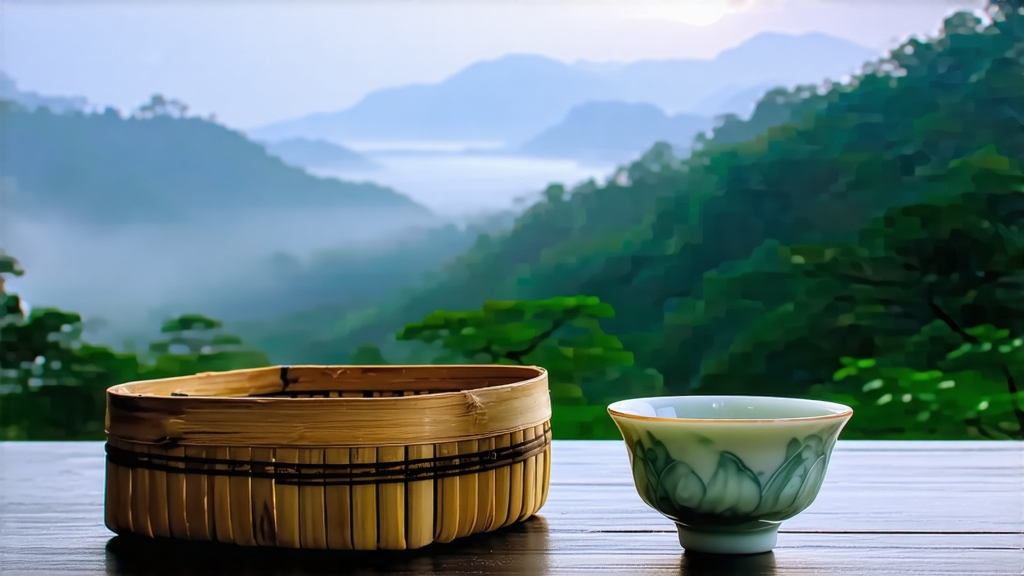
High among the perennially cloud-draped Meng Ding Mountains of Ya’an, Sichuan, a tea once reserved for emperors still unfurls its slender golden buds every early April. Meng Ding Huang Ya—literally “Mengding Yellow Bud”—is the least-known yet most aristocratic member of China’s tiny yellow-tea family. While green tea dominates Chinese export statistics and dark pu-erh fills auction headlines, yellow tea occupies a whispered niche: fewer than three thousand kilograms reach the global market each year, and more than half of that share is Meng Ding Huang Ya. To understand why this tea once traveled in sedan chairs guarded by sword-bearing escorts, one must walk the narrow slate paths above the town of Mingshan, breathe the humid air that smells forever of rain-soaked bamboo, and listen to the same temple bells that monks rang a thousand years ago to mark the plucking season.
History: from altar to altar
Buddhist texts from the Western Han (2nd century BCE) already record “mengding” as a site where priest-teaists planted seven tea bushes believed to have been donated by the mythical cultivator Wu Li-zhen. By the Tang dynasty (618-907 CE) the mountain’s spring buds were steamed, compressed, and carried fifteen hundred kilometers north to Chang’an as tribute. When Emperor Xuanzong tasted the liquor’s luminous apricot hue in 742 CE, he declared it “imperial yellow,” a color reserved for the sovereign alone. The Song court shifted from steamed cakes to loose leaf, and the Ming further refined the technique by adding the “sealed yellowing” step that defines the category today. During the Qing, the 27th generation abbot of Meng Ding Monastery personally supervised the final roast, and only three chests—marked with the emperor’s dragon seal—left the county each year. Republican-era warlords, Japanese air raids, and the turmoil of the 1950s almost erased the craft; in 1978 a retired monk named Shi Qing-yun and two ageing farmers restarted production from memory, using seed stock secretly kept in a monastery vegetable plot. Their revival is the reason modern drinkers can still taste a flavor that enthralled thirteen dynasties.
Terroir: where clouds press against tea
Meng Ding Shan rises abruptly from the Sichuan basin to 1,456 m, trapping monsoon moisture that creates 280 foggy days annually. The short-wave ultraviolet light filtered through this veil increases amino acids—especially L-theanine—while retarding leaf lignification, yielding buds so tender they can be pierced by a fingernail. Soils are acid yellow loam derived from weathered sandstone, rich in iron and copper ions that act as natural oxidase cofactors during yellowing. Night temperatures drop 8-10 °C below daytime highs, further concentrating aromatic precursors. Crucially, the mountain is planted almost entirely with a single local cultivar, “Mengding #9,” a slow-budding descendant of those original seven bushes whose tiny leaves contain twice the normal ratio of soluble sugars to polyphenols, giving the finished tea its hallmark sweetness without astringency.
Plucking: one bud, one leaf, one dawn
The picking window opens when the local azalea bursts into pink bloom—usually between 25 March and 5 April—and closes as soon as 10 % of the buds unfurl into “fish-leaf” stage. Workers climb the terraces at 05:30, before mountain mist lifts, selecting only the apical bud plus the nearest half-unfurled leaf, a standard called “qiang kou” (spear-mouth). A seasoned plucker fills a 500 g bamboo basket in ninety minutes; it will take 4.5 kg of this fresh material—roughly 18,000 shoots—to yield a single kilogram of dry tea. Leaves are carried downhill in baskets lined with banana leaf to prevent compression, arriving at the village workshop within two hours of harvest.
Craft: the art of letting the leaf suffocate in its own warmth
Yellow tea’s defining step is “men huang,” sealed yellowing, a controlled form of non-enzymatic oxidation that occurs after kill-green. Meng Ding Huang Ya uses the “zao gong” (early craft) variant, performed in three micro-stages:
- Sha Qing (kill-green): 180 °C bamboo-roasted wok, 2.5 min
Bud